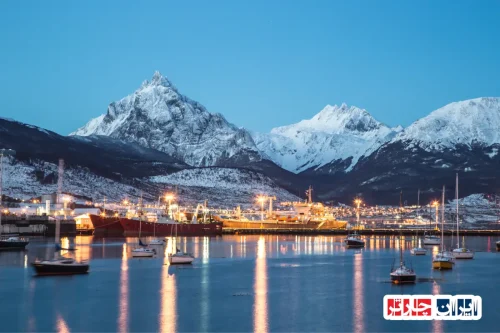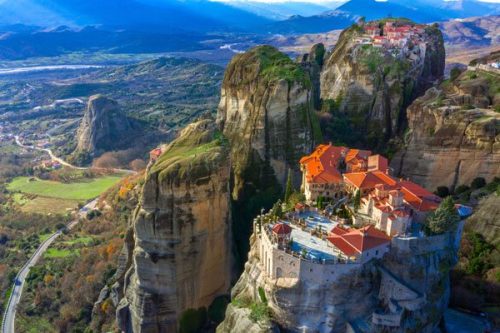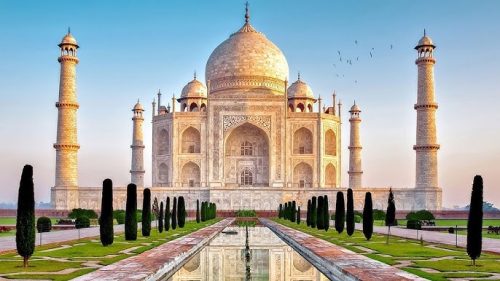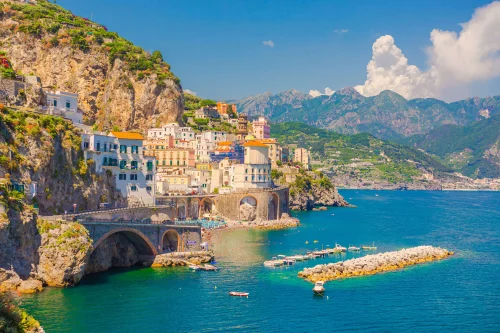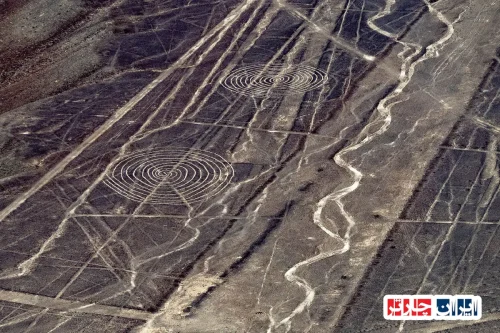Discover the Rich History and Natural Beauty of Robben Island Cape Town South Africa
Robben Island Cape Town South Africa stands as a powerful symbol of resilience, freedom, and historical significance. Located just off the coast of Cape Town, this island has played a pivotal role in South Africa’s journey toward democracy and human rights. From its origins as a natural habitat to its transformation into a notorious prison, Robben Island Cape Town South Africa embodies a compelling narrative that attracts millions of visitors each year. Visitors to Robben Island Cape Town South Africa can explore its historic prison where Nelson Mandela was incarcerated, walk through preserved sites that tell stories of struggle and resistance, and enjoy breathtaking views of the surrounding ocean. The island’s diverse ecosystems and vibrant marine life make it a unique destination for nature lovers. Whether you’re interested in history, culture, or natural beauty, Robben Island Cape Town South Africa offers an unforgettable experience that highlights the resilience of the human spirit and the importance of freedom. To learn more about this iconic location, visit Robben Island-Iran Charter. Discover the stories of heroism, sacrifice, and hope that have shaped South Africa’s history and continue to inspire the world today.
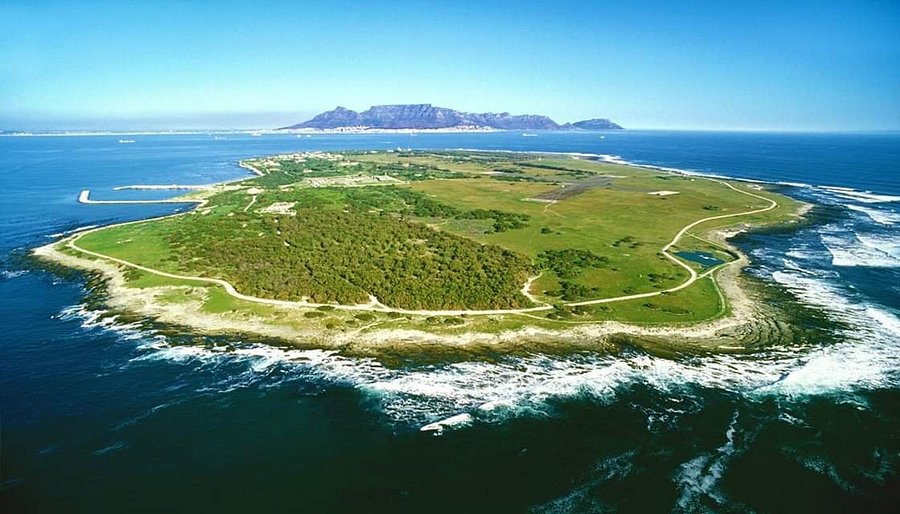
Discover the Rich History of Robben Island in Cape Town, South Africa
Robben Island, located just off the coast of Cape Town, South Africa, is a symbol of resilience and freedom. Its history dates back centuries, beginning as a natural island rich in marine life and shells, gradually transforming into a place of imprisonment and resistance. Over time, natural geological processes shaped the island into a strategic location that has played a pivotal role in South Africa’s history. From early indigenous settlements to colonial use, Robben Island has witnessed significant historical events that have shaped the nation’s identity. Today, it stands as a UNESCO World Heritage Site, attracting millions of visitors eager to learn about its profound past and its role in the fight for justice and equality.
The Untold Stories of Robben Island: Prisoners, Resistance, and Darker Chapters
Robben Island’s history is filled with stories of courage and hardship. It served as a maximum-security prison where notable figures such as Nelson Mandela and other anti-apartheid activists were incarcerated. Their stories of perseverance amid harsh conditions symbolize the struggle for freedom and human rights. Beyond these well-known figures, countless anonymous prisoners endured brutal treatment, yet maintained hope and resistance. The island’s dark chapters include stories of torture, forced labor, and isolation, which have become powerful symbols of resilience. Visiting these sites and hearing these stories provides visitors with a deeper understanding of the sacrifices made for justice and the enduring spirit of those who fought oppression.
Robben Island’s Role in the Fight Against Apartheid and Racial Discrimination
Throughout South Africa’s apartheid era, Robben Island was more than a prison; it was a symbol of resistance against racial segregation and injustice. Political prisoners, including Nelson Mandela, were held here, making it a focal point of the anti-apartheid movement. The island’s history reflects the resilience of those who refused to accept racial discrimination, fighting for equality and human dignity. Its significance extends globally as a testament to the power of perseverance and collective action. Today, Robben Island stands as a reminder of the importance of human rights and the ongoing struggle against racial injustice worldwide. Millions visit annually to pay homage to the heroes who endured hardship for a freer South Africa.
Natural Beauty and Unique Ecosystems of Robben Island
Stunning Landscapes and Scenic Views
Robben Island boasts breathtaking scenery, from rugged coastlines to lush vegetation. Its diverse landscapes include small forests, rocky shores, and panoramic viewpoints that offer spectacular vistas of the Atlantic Ocean. Visitors can enjoy peaceful walks, photography, and observing wildlife amid these natural settings. The island’s scenic beauty provides a tranquil contrast to its turbulent history, making it a compelling destination for nature lovers and history enthusiasts alike.
Marine Life and Underwater Ecosystems
The waters surrounding Robben Island are teeming with marine biodiversity. Dolphins, seals, and various fish species inhabit these waters, making it a popular spot for whale watching and snorkeling. The coral reefs and underwater habitats are vital for maintaining ecological balance and are protected as part of conservation efforts. Visitors engaging in marine activities gain insight into the island’s ecological significance and the importance of preserving marine biodiversity.
Historical and Cultural Landmarks
Beyond its natural beauty, Robben Island hosts several historical sites, including former prison buildings, museums, and memorials. These landmarks tell stories of struggle, resilience, and hope. Guided tours often combine natural exploration with cultural education, offering a comprehensive experience that highlights both the island’s ecological and historical importance. This blend of nature and history makes Robben Island a unique destination for all travelers.
The Significance of Robben Island in Cultural and Educational Contexts
Robben Island’s role extends beyond tourism; it is a vital educational resource. Schools and organizations worldwide organize visits to teach about human rights, resistance, and social justice. The island’s museums and guided tours provide immersive experiences, helping visitors understand the importance of freedom and equality. Its stories serve as powerful lessons for future generations, emphasizing the importance of standing against oppression and advocating for justice. The island’s cultural significance is also reflected in art, literature, and films inspired by its history, further spreading its message globally.
Conservation and Preservation of Robben Island’s Natural and Cultural Heritage
Protecting Robben Island’s ecological and historical assets is a priority for conservationists. Efforts include habitat restoration, wildlife protection, and maintaining historical sites. These initiatives ensure that future generations can learn from and enjoy the island’s natural beauty and rich history. Visitors are encouraged to respect the environment and cultural sites, contributing to ongoing preservation efforts. Recognizing the island’s global importance, international cooperation helps safeguard its legacy as a symbol of resilience and human rights.
Why Robben Island Deserves UNESCO World Heritage Status
Robben Island’s universal significance as a symbol of resistance and human dignity makes it a strong candidate for UNESCO World Heritage recognition. Its history encapsulates the struggle against racial oppression and the fight for freedom, inspiring millions worldwide. Official designation would enhance preservation efforts, increase global awareness, and promote educational initiatives. Recognizing Robben Island as a UNESCO site affirms its importance as a cultural and historical monument that embodies universal values of justice, resilience, and hope.
Planning Your Visit: Tips and Highlights for Exploring Robben Island
Essential Travel Tips
To make the most of your trip, plan ahead by booking guided tours and checking weather conditions. Wear comfortable clothing and footwear suitable for walking. Arrive early to avoid crowds and ensure ample time to explore the island’s key sites. Respect the cultural significance of the locations and follow safety guidelines during marine activities.
Must-See Attractions and Experiences
Highlights include the prison museum, Nelson Mandela’s cell, and the historical landmarks that narrate stories of resistance. Don’t miss the panoramic viewpoints and natural trails that showcase the island’s scenic beauty. Engaging with knowledgeable guides enriches the experience, providing insights into the island’s complex history and ecological diversity.
Making the Most of Your Visit
Allocate sufficient time to absorb the stories, enjoy the landscapes, and reflect on the significance of Robben Island. Capture memories through photography and participate in educational programs. Respect the environment and cultural sites to help preserve this UNESCO World Heritage Site for future visitors. A well-planned visit offers a meaningful journey into South Africa’s past and its ongoing pursuit of justice and equality.
Frequently Asked Questions about Robben Island in Cape Town, South Africa
- What is the historical significance of Robben Island?
- Robben Island is a UNESCO World Heritage Site that symbolizes resilience and freedom. It has a rich history dating back centuries, from indigenous settlements to its role as a prison during colonial times and apartheid. The island witnessed key events in South Africa’s struggle for justice, hosting notable prisoners like Nelson Mandela. Today, it stands as a testament to resistance against oppression and a reminder of the fight for human rights.
- Who are some of the most famous prisoners held on Robben Island?
- Nelson Mandela is the most renowned inmate, imprisoned for 27 years for his anti-apartheid activism. Other notable figures include Walter Sisulu, Robert Sobukwe, and Govan Mbeki. Their stories of perseverance symbolize the broader resistance movement against racial segregation and injustice in South Africa.
- How did Robben Island contribute to the anti-apartheid movement?
- Robben Island served as a maximum-security prison where political prisoners, including Nelson Mandela, were held. It became a symbol of resistance and defiance against racial segregation. The imprisonment of these leaders galvanized the anti-apartheid movement, inspiring global support and internal resistance, ultimately leading to the end of apartheid.
- What natural features make Robben Island unique?
- The island features rugged coastlines, lush vegetation, and scenic viewpoints overlooking the Atlantic Ocean. Its diverse landscapes include rocky shores, small forests, and panoramic vistas, offering visitors a peaceful natural environment alongside its historical sites.
- What marine life can be observed around Robben Island?
- The waters surrounding the island are rich in marine biodiversity, including seals, dolphins, and various fish species. The area is popular for whale watching, snorkeling, and exploring underwater ecosystems that are vital for ecological balance and conservation efforts.
- What are some key historical landmarks on Robben Island?
- Important sites include the former prison buildings, Nelson Mandela’s cell, the museum, and memorials. Guided tours often combine visits to these landmarks with natural exploration, providing a comprehensive understanding of the island’s history and ecological significance.
- Why is Robben Island considered an important educational resource?
- Robben Island is used worldwide for educational purposes, teaching lessons about resistance, justice, and human rights. Schools and organizations organize visits to learn about the struggles for freedom and equality, making it a powerful symbol of social justice and resilience.
- How are efforts made to preserve Robben Island’s natural and cultural heritage?
- Conservation initiatives include habitat restoration, wildlife protection, and maintaining historical sites. Visitors are encouraged to respect these sites, helping ensure that future generations can learn from and enjoy the island’s ecological and historical assets.
- What makes Robben Island a candidate for UNESCO World Heritage status?
- Its universal significance as a symbol of resistance and human dignity, along with its historical and ecological importance, make it a strong candidate. Recognition would enhance preservation, raise global awareness, and promote educational initiatives worldwide.
- What are some tips for planning a visit to Robben Island?
- Book guided tours in advance, check weather conditions, wear comfortable clothing, and arrive early. Respect the cultural sites, follow safety guidelines, and allocate enough time to explore the island’s key attractions for a meaningful experience.
- What are the must-see attractions on Robben Island?
- Highlights include Nelson Mandela’s cell, the prison museum, historical landmarks, and scenic viewpoints. Engaging guides enrich the visit by sharing stories of resistance and ecological diversity.
- How can visitors make the most of their trip to Robben Island?
- Plan sufficient time to explore, participate in educational programs, take photographs, and reflect on the island’s history. Respect the environment and cultural sites to help preserve this UNESCO site for future visitors.
- What role does Robben Island play in promoting awareness of human rights?
- The island’s history of imprisonment and resistance serves as a global symbol of the fight for justice and equality. It educates visitors about the importance of standing against oppression and advocates for human dignity worldwide.
- How does Robben Island contribute to South Africa’s national identity?
- As a site of resistance and liberation, Robben Island embodies the struggle for freedom and human rights. It is a powerful symbol of resilience, unity, and the ongoing journey toward equality in South Africa.
- What is the significance of Robben Island’s natural ecosystems?
- The island’s ecosystems support diverse marine and terrestrial life, playing a vital role in ecological balance. Conservation efforts aim to protect these habitats, ensuring their preservation for future generations.



















